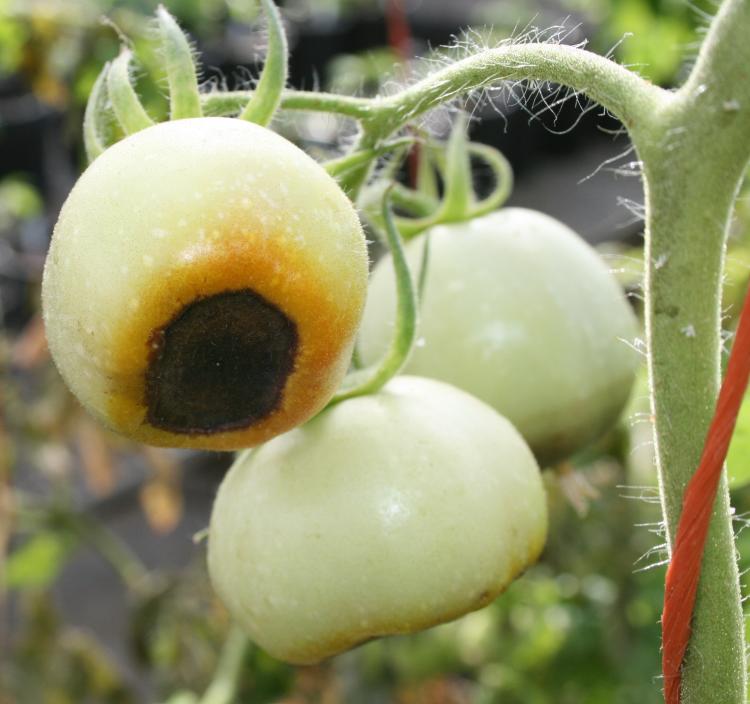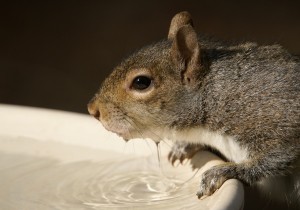
A calcium deficiency causes blossom end rot on tomatoes, peppers and eggplant. Photo courtesy Tim Coolong, University of Kentucky
“I am having a little problem with my tomatoes,” writes L.B. of Indianapolis.
“The ones that are turning red the earliest have black spots on the bottom end of them, mostly on the Romas. I have been watering them by hand because of the drought. Is it because I am over watering or not enough water? Please help me.”
And the answer is: Yes!
What the reader’s tomatoes have is blossom end rot, a condition caused by a calcium deficiency. The dark spot is not a disease. It is a scar where the tomato was attached to the blossom. Irregular watering is the number one cause of blossom end rot. Fluctuations in soil moisture also contribute to the disorder. As hot as it has been, soil can dry out quickly, even if gardeners are watering.
Blossom end rot also may appear on peppers, cucumbers, squash, pumpkins and a few other vegetables. It is all right to eat the vegetables if the affected area is not too large and can be removed easily.
The best way to avoid this is to water these plants regularly, but especially in hot, dry weather. Each vegetable plant needs about 1 inch of water a week. Mulching the vegetable garden helps moderate soil temperatures and moisture.
It’s also likely that the excessively hot weather reduced bee activity, which reduces the pollination and production of vegetables. Be sure to pick the veggies as they ripen to encourage plants to keep producing.

Birds, squirrels and other wildlife need water during times of drought and escessive heat. (C) Laura Young/iStockphoto
Wildlife and drought
Of course, the hot, dry weather has sparked lots of concern about our vegetables and other plants, but gardeners also may want to lend a helping hand to birds and other wildlife.
With the excessive heat and drought, birds, squirrels, chipmunks, raccoons, opossums, bees, butterflies and other wildlife would love to take a drink or dip in a birdbath or saucer of fresh water. Empty every day (on a thirsty plant, of course) and replenish with fresh water.